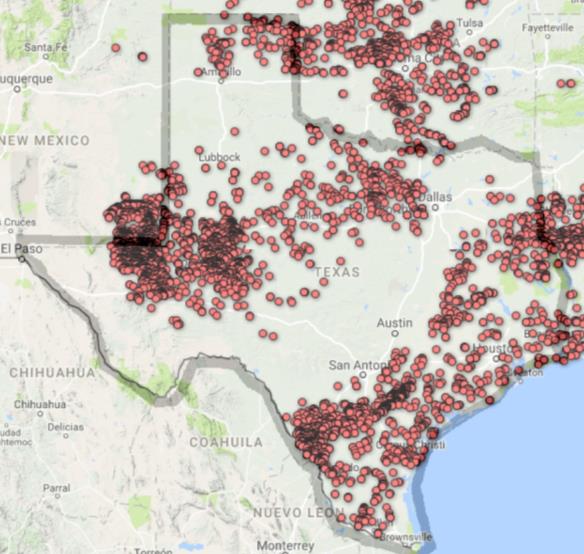Texas should listen to its own scientific task force about methane

This post originally appeared on TribTalk.org.
A new report from the Academy of Medicine, Engineering and Science of Texas (TAMEST) Shale Task Force underscores the problem of methane emissions from Texas’ oil and gas industry.
When burned, natural gas has about half the CO2 emissions of coal (that’s good!), but the release of methane into the atmosphere can greatly erode that benefit. TAMEST explains that methane leak rates can greatly impact the overall greenhouse gas footprint of natural gas and reduce the benefit of burning natural gas versus coal. As TAMEST puts it, “Although the greenhouse gas footprint of natural gas combustion is lower than the footprint associated with coal or petroleum combustion, emissions along the supply chain of natural gas can change this footprint.”
The report notes that when industry emits methane, it also emits other hazardous air pollutants that could jeopardize public health — and calls for more research to better understand how these emissions could be harming communities near oil and gas developments.
But the report, written by a task force that consisted of oil and gas experts from academia, industry and non-governmental organizations, also examines the solutions for reducing these harmful emissions. According to the experts, “recent federal and state regulations have reduced emissions from multiple types of emission sources” and the report authors go on to predict that these emissions will continue to decrease under our nation’s current methane policies.
Under normal circumstances, this observation would be considered good news. But with the Trump Administration placing a two-year pause on methane controls, air pollution is expected to get worse, not better. As the number one source of oil and gas methane pollution in the country — Texas is about to bare the biggest brunt of this proposed rule suspension. EDF estimates that, without national methane reduction policies, Texas companies could pump up to nearly 10,000 tons of methane and another 100 tons of hazardous air pollutants into the atmosphere.
Regrettably, when it comes to climate and air, Texas’ political, regulatory and industry leadership are openly hostile toward any efforts aimed at solving the negative trade-offs associated with oil and gas. The Texas Railroad Commission and the Texas Oil and Gas Association are among some of the entities suing the Environmental Protection Agency over commonsense pollution controls — effectively using taxpayer dollars to argue in favor of more pollution.
According to the TAMEST report:
In 2016, under the Obama administration, the EPA began collecting information from oil and gas operators to inform potential future [methane] standards for oil and gas production sources. In March 2017, under the (then) new Trump administration, the EPA officially withdrew the information collection request.
This EPA information request was in preparation for future methane rules to address pollution from existing oil and gas sources — especially important in Texas, since as TAMEST points out, “existing well sources in Texas far outnumber newly created wells…” Guess who led the charge to petition the Trump administration to withdraw this EPA information collection request? Yep, the state of Texas.
These unfortunate decisions by Texas policy makers will directly impact Texans and go against the findings of the state’s own oil and gas experts. The very emission decreases cited in the TAMEST report are now in jeopardy.
Texas’ actions prove many of our state leaders are turning blind eyes to some of the biggest health and environmental risks associated with oil and gas development — fighting tooth and nail against existing protections and efforts to learn more to inform future protections.
We should praise the good work of the TAMEST Shale Task Force. At the same time, we need to hold our government leadership and the industry’s worst actors accountable for ignoring what their own experts are telling them.
Disclosure: The Environmental Defense Fund has been a financial supporter of The Texas Tribune. A complete list of Tribune donors and sponsors can be viewed here.











